How to create a feel-good garden that looks great and make you feel even better
Curate an outdoor space that puts a pep in your step and serves up all the feel-good vibes
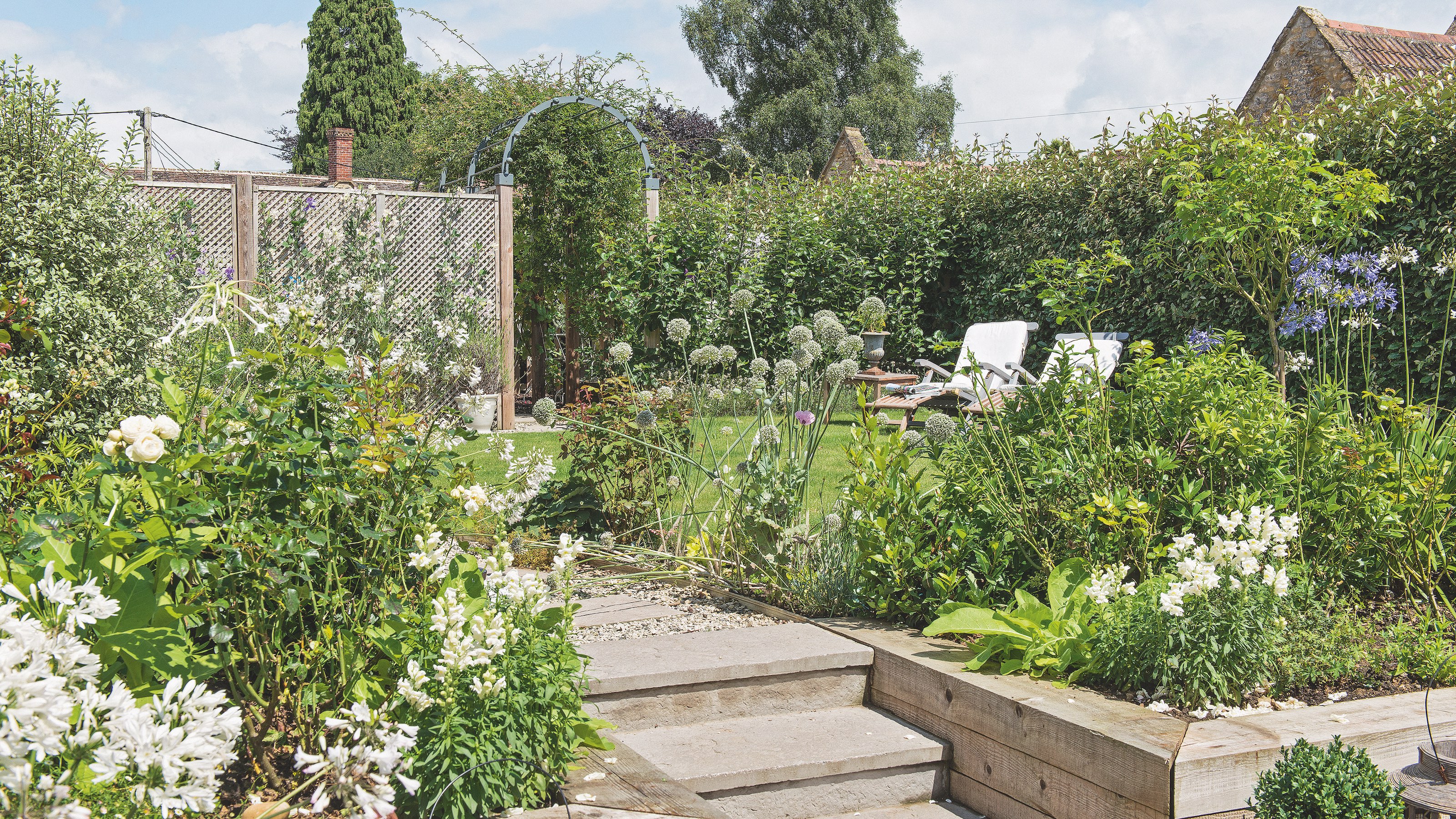


We want our gardens to look good – to be inviting spaces where we relax, play and entertain, as well as tending our lawns and flower beds. But more than ever, we want our gardens to help us feel good, too. We know that being in nature has a host of proven benefits for our wellbeing, but our garden ideas allow us to bring those natural perks closer to home.
'Scientific research is now backing what garden designers have long understood, which is that gardens can encourage recovery from physical and mental fatigue. Evolutionary biology shows that people prefer views reminiscent of the savannas where humans evolved; throughout history, trees and water have signalled an oasis; and flowering plants have been a sign of possible food,' explains award-winning garden designer Robert Myers.
How to create a feel-good garden
For the best feel-good garden results, we need to make sensory gardens that we find stimulating. 'Gardens that can be seen, touched, smelled and listened to are the most soothing,' Robert says. 'Add reflective or gently moving water, scented plants, paths for gentle walks, shaded alcoves and places to sit and talk.'
We spoke to garden experts to find out the essentials for a feel-good garden. How many will you include in your plot?
1. Add a tree or two
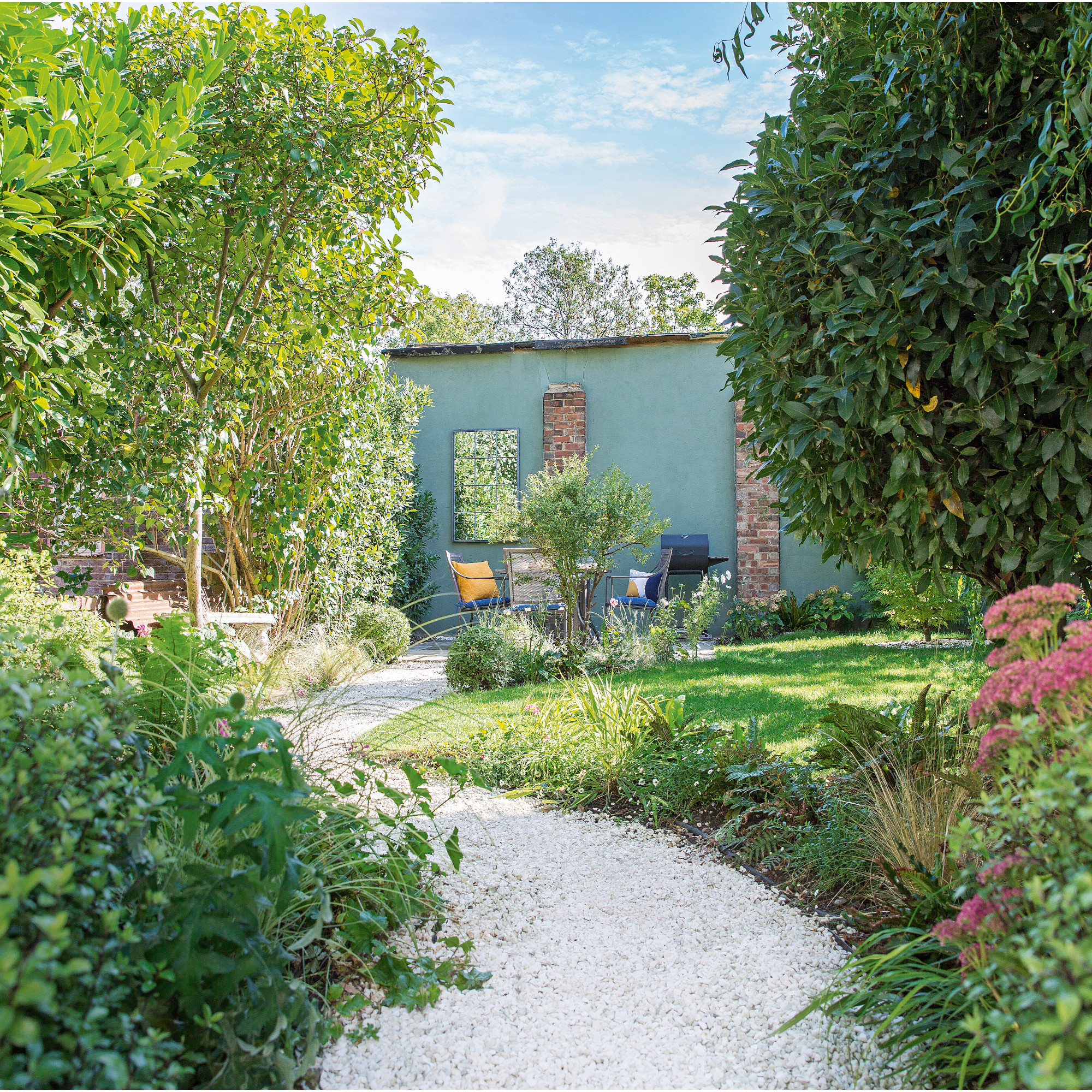
Green spaces indoors are associated with softness and serenity – it's why the hue is so often picked as a calm colour for living rooms. And the effect is even more potent outdoors.
'The essence of a restorative garden space is that it should be predominantly green,' says garden designer Robert Myers, who has created the ‘Imagine the World to be Different’ show garden for St James's, Piccadilly Garden, for this year's upcoming RHS Chelsea flower show.
'Create vistas through trees and have plenty of textured, multi-layered greenery. Trees that cast dappled shade create an ideal natural structure, with naturalistic planting beneath.'
Sign up to our newsletter for style inspiration, real homes, project and garden advice and shopping know-how
Woodland garden ideas are a great place to start to achieve this effect, even if you have a small outdoor space many trees for small gardens will cast that dappled light effect.

Robert says his work is about creating places that bring people joy and meaning. He is a six-time RHS Chelsea Flower Show gold medallist and has won many other awards for his work, including the Society of Garden Designers’ Grand Award 2017 for the Magic Garden at Hampton Court Palace.
2. Pick mood-boosting blooms
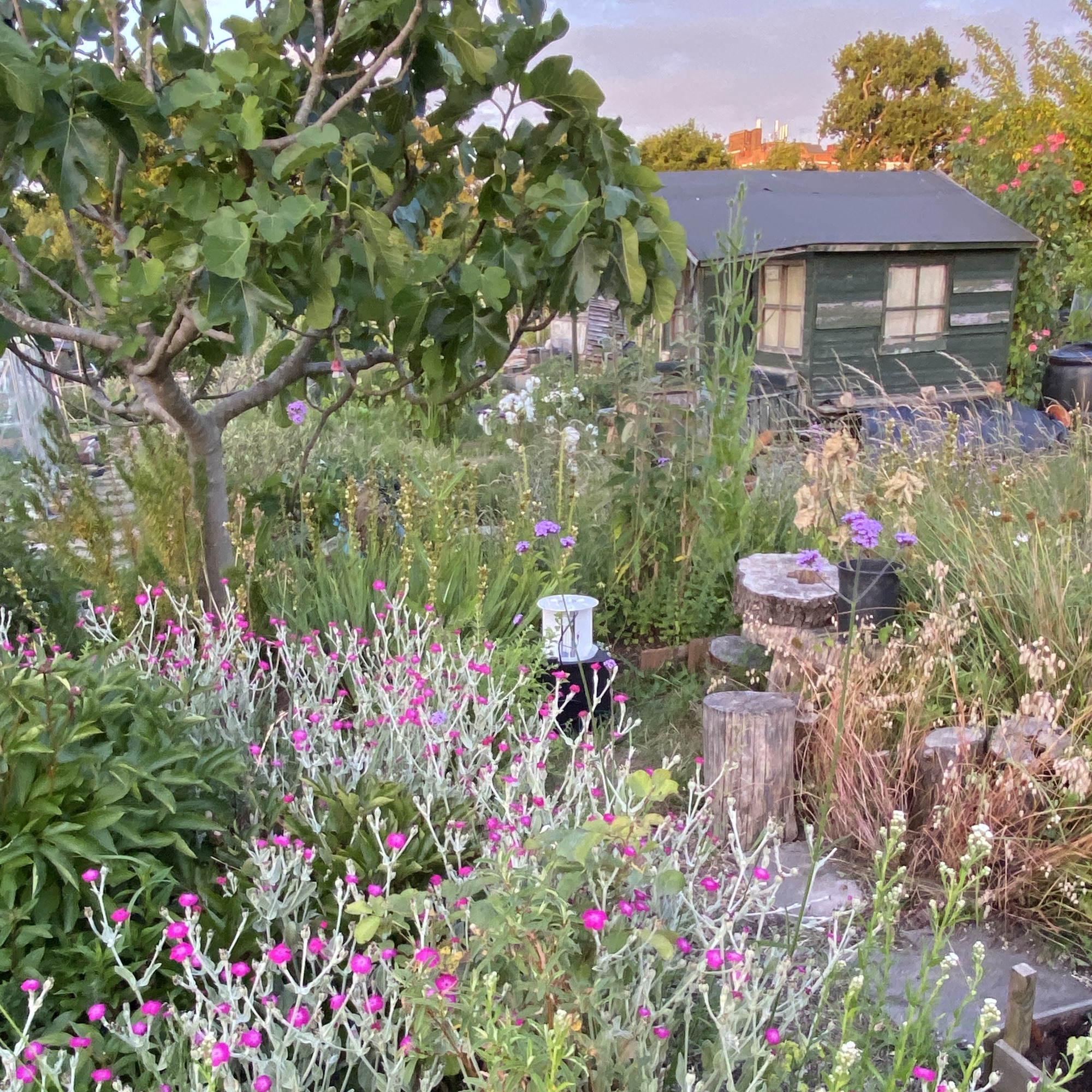
Colour psychology has found that different hues prompt emotional and physical responses, so it makes sense that the colours we 'decorate' our garden will influence how good we feel in our outdoor space.
'Different colours have been proven to impact our moods. For example, blue represents calmness. Red flowers, such as poppies, symbolise passion and confidence. And yellow signifies happiness. So it could be worth considering this when designing your garden,' suggests Dr Emily Lambert, a conservation scientist and co-founder of wildflower company, Seedball. You can pick up poppy seeds from just £2.99 at Waitrose Garden.
Picking a concise colour palette for your garden border ideas can also help if too much choice makes you feel overwhelmed. You may feel better picking from just a few colours than the entire rainbow.
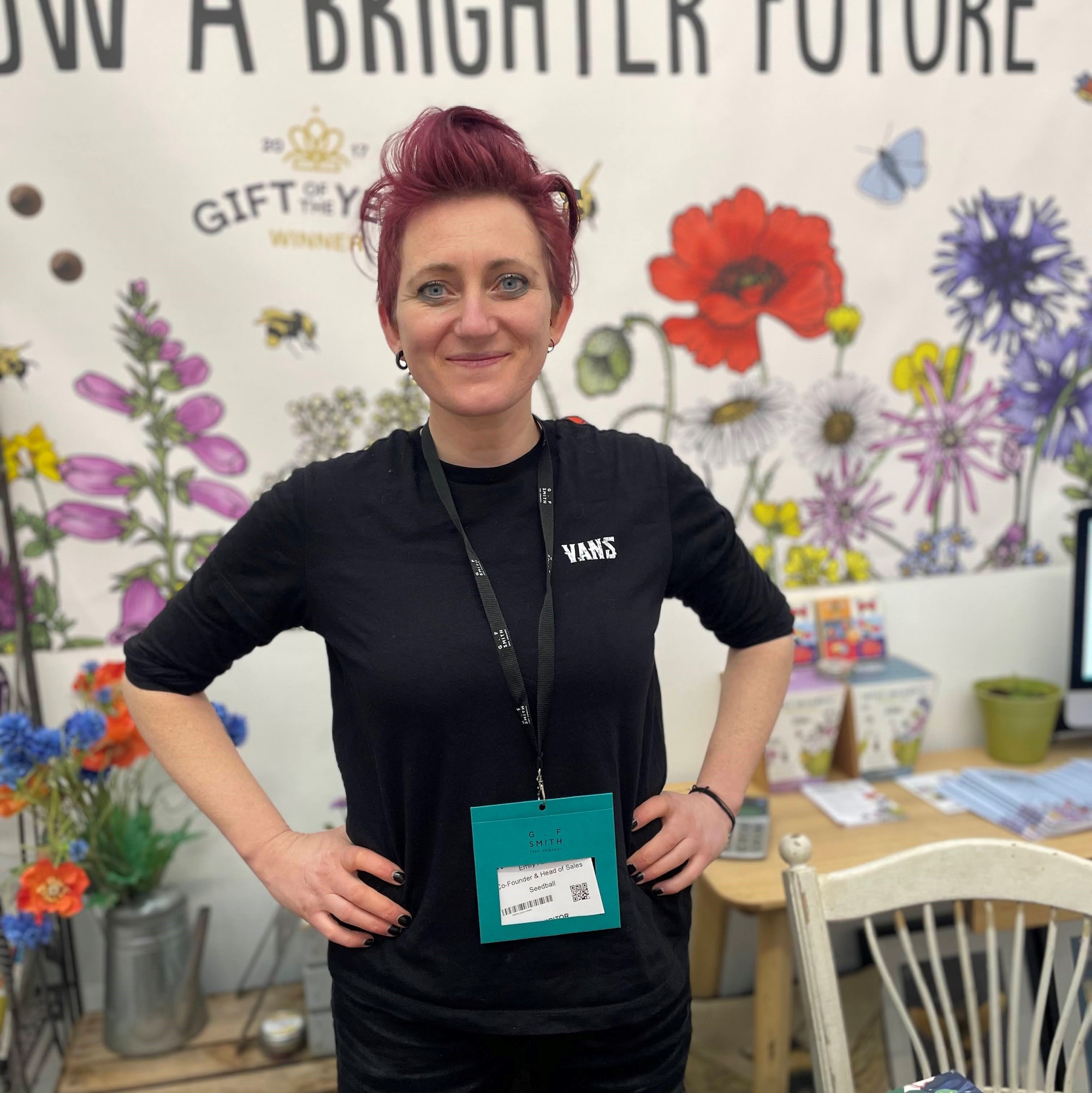
Emily is a conservation scientist and co-founder of Seedball, an award-winning, not-for-profit organisation that aims to increase the abundance of wildflowers and wildlife in our gardens and landscapes.
3. Include a water feature

Our body responds to water on a deep biological level – it's an evolutionary response that lingers long after we invented taps and plumbing! Water feature ideas introduce a feelgood sensory element to a garden, with sound, sight, touch and even smell stimulated by the presence of water.
'The addition of a reflecting pool would be ideal, but if space is short, a small bowl or trough of still water will reflect the sky and plants around it and attract wildlife,' suggests garden designer Robert Myers.
4. Don't forget fragrance
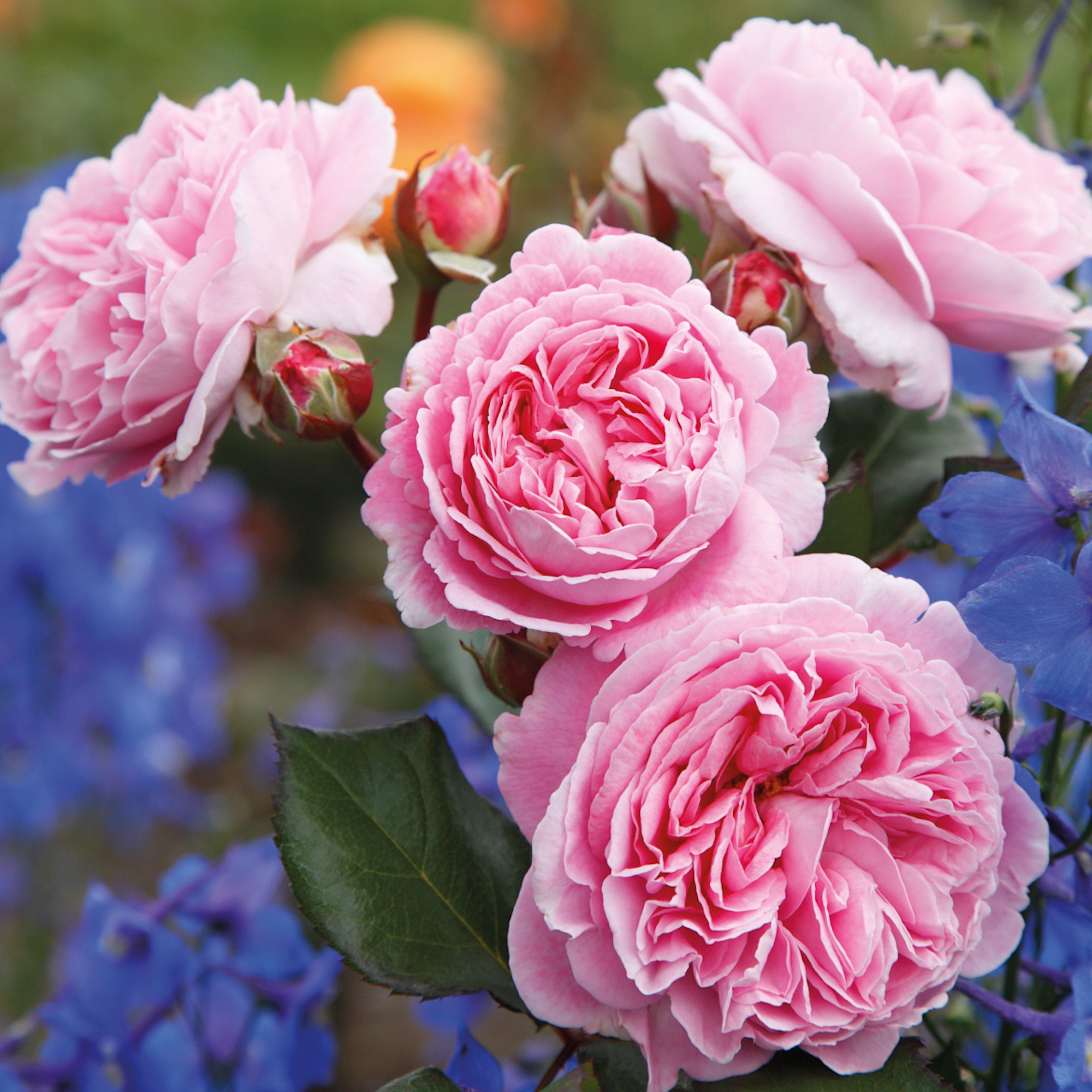
Scent is one of the most powerful mood boosters, especially when it's associated with favourite people or memories. In the garden, naturally, the best way to add scent is by choosing fragrant flowers. The easiest way to do this is through growing a scented rose like the Emily Bronte rose from David Austen, or adding a herb garden idea.
'Most of us have experienced the sense of being transported back to a memorable occasion or feeling when triggered by a particular scent, such as the perfume of a loved one or the freshness of spring in the air,' says Ian Limmer, head of the nursery and plant breeding programme at Peter Beales Roses. 'As one of the most distinctive scents of all, the fragrance or ‘attar’ of roses has great evocative power, which is why it is valued so highly as a perfume.
'The heady fragrance of roses can bring even more joy to the great outdoors, not to mention the sheer visual delight that contributes to an overall sense of gorgeousness in a blooming garden. Happiness is so strongly associated with wellness that it’s difficult to separate the two.'
5. Welcome birds and bugs

Wildlife garden ideas aren't just good for all the small wild creatures, but your well-being too. The chirp of birdsong and the buzz of bees bring an extra dimension to any outdoor space – think of it as your garden's Spotify playlist, curated by nature. Plus, you'll get the feel-good buzz of knowing your garden is a haven for our precious and at-risk wildlife.
'Insects and birds will animate your space and deepen your enjoyment of it,' explains garden designer Robert Myers. 'Design and plant with local wildlife in mind, and allow everything to be just a little more wild and messy. Less lawn mowing, more relaxing!
6. Grow wildflowers
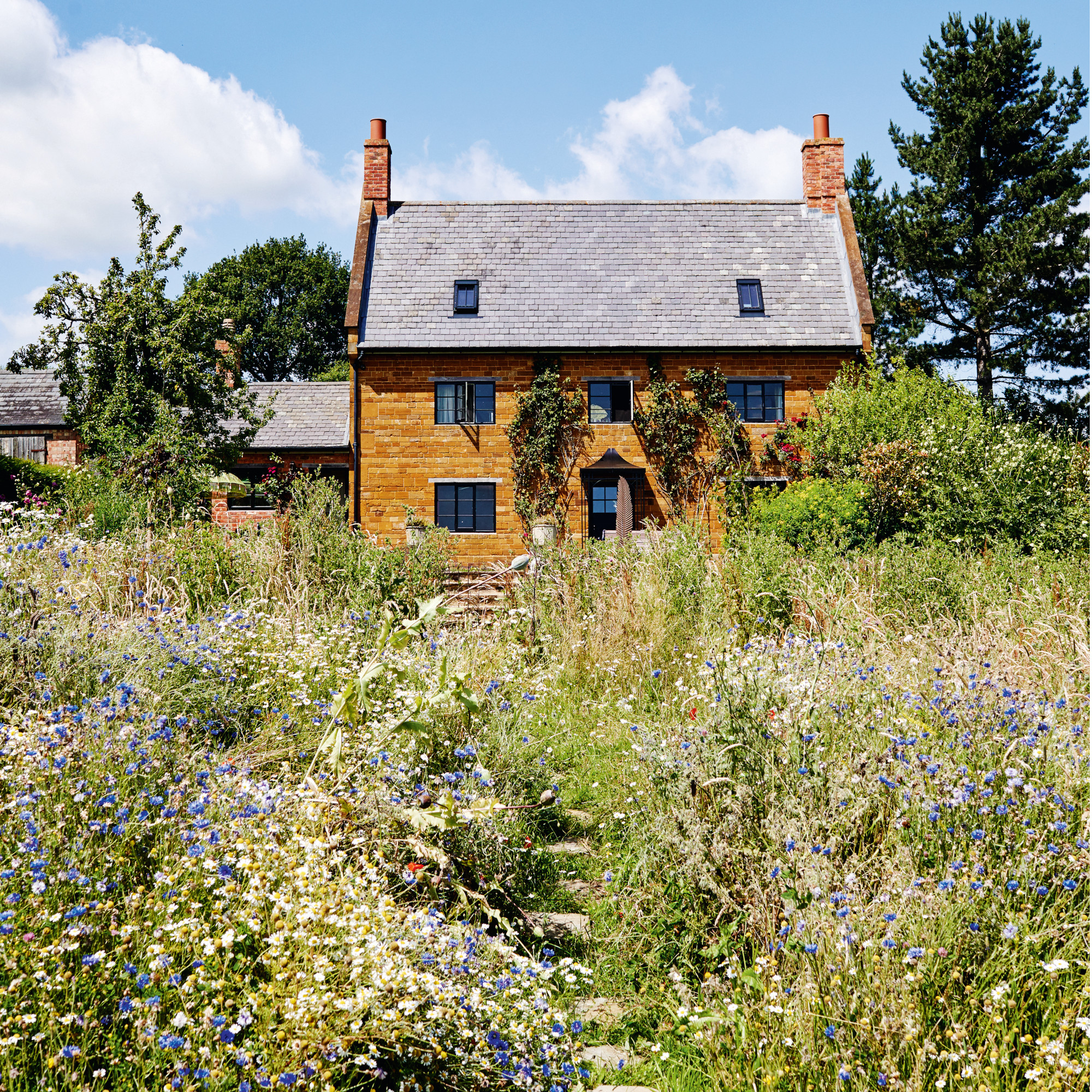
A manicured plot may satisfy any perfectionist tendencies, but sometimes you need to relax a little and unleash your wild side – in a plant sense – to feel good.
'Wildflowers offer a plethora of benefits,' explains Seedball's Dr Emily Latimer. 'Their vibrant colours and diverse shapes create visually stunning displays that can uplift our moods and encourage relaxation. They also allow us to connect with nature, as we observe the pollinators and wildlife that visit them, offering us a sense of purpose and connection to the world around us.'
Wildflower garden ideas are ideal if you love your garden but hate the upkeep.
'Unlike other species of flower, wildflowers are very low maintenance and can withstand abandonment and still thrive.' says Emily. 'This is particularly beneficial to those who might not want to spend all weekend in the garden, but still want a colourful garden to relax in.
You can pick up packs of wildflower seeds at most garden centres, but we love the seedball wildflower seed packets available at Waitrose Garden and other garden stores. You can even pick up a shade wildflower mix from Seedball from Waitrose Garden to perk up even shaded parts of your garden.
7. Embrace change
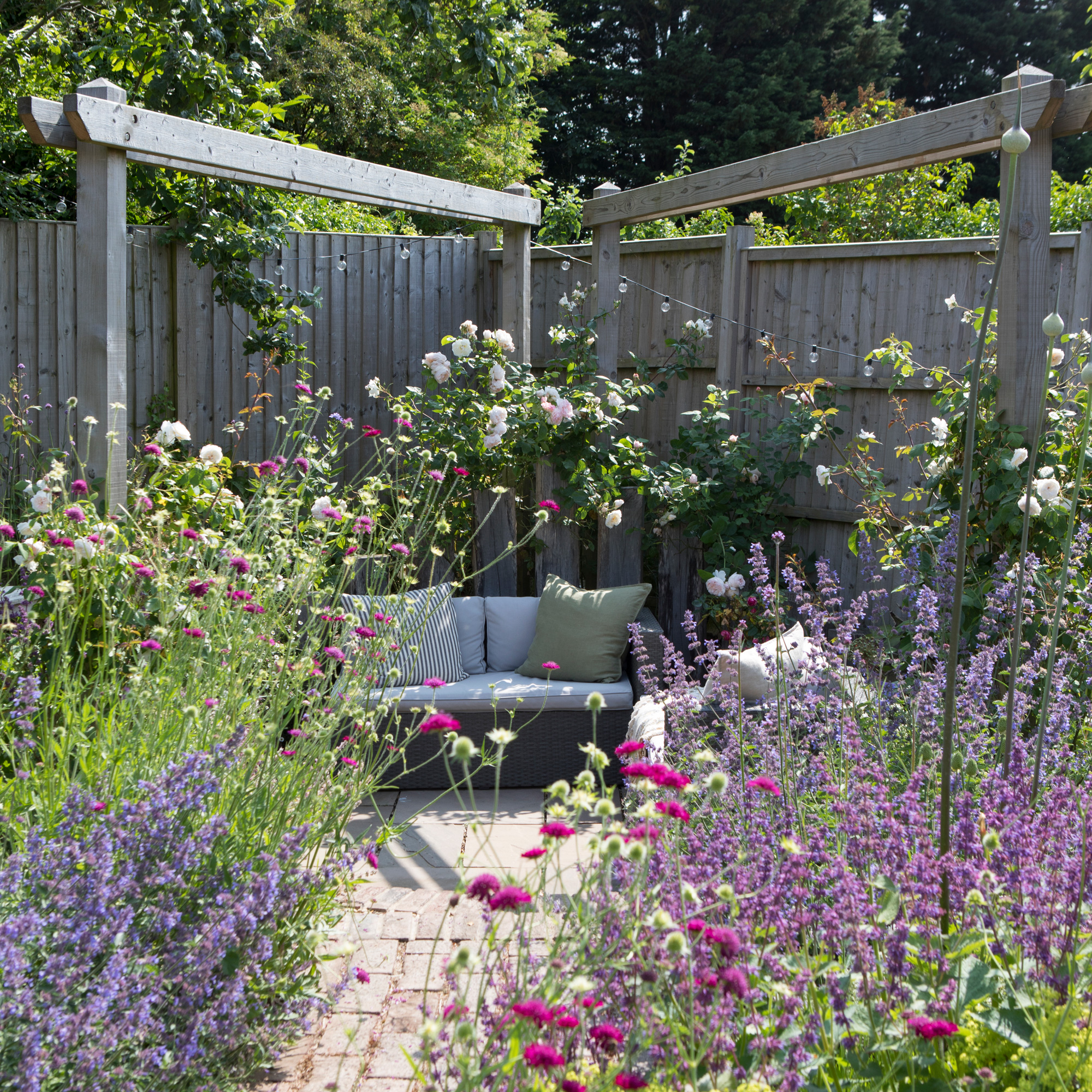
One of the pleasures of gardens is that they are always in a state of flux. Each season brings new flowers and plants come into their own; a day of sun will see blooms open up; and the look of your plot will change as it matures. Embracing the change, rather than fighting against it, is the best way to create a feelgood garden.
'Embracing the unknown and seeing potential in unexpected outcomes becomes a part of the gardening journey,' says Robert Myers. 'Planting at an early stage, experimenting with self-seeding varieties, and allowing native wildflowers and robust new plant communities to vie for space are all part of this forward-thinking approach.'
8. Stop to enjoy your garden

We don't want to spend so much time planting, primping and pruning our garden that we forget to enjoy the fruit of our efforts. It is important to take time to think about your garden seating ideas and kit it out with the best garden furniture to relax in.
'Place as much effort into creating a space to enjoy your garden, as the garden itself,' says Diana Yates, lifestyle writer and author of Growing at Greenfields. 'A swinging garden seat, or a bench or daybed piled with cushions in a sunny but protected spot, can create the feeling of a retreat, especially when planted close to highly scented blooms such as jasmine, roses and honeysuckle.'

No matter the size of your garden, squeeze in a spot to perch with this elegant bistro set.

Snuggle down into a more relaxed outdoor sofa with this modular version from John Lewis,

Make space for a calming morning coffee with this garden sofa and coffee table set
It's the ultimate way to live our best life in the feel-good garden we've created.

Andrea began her journalism career at Ideal Home and is currently Editor of our sister title, Country Homes & Interiors, which celebrates modern country style. Andrea is passionate about colour and how it can transform both our homes and our sense of wellbeing, and has completed The Power of Colour course with the prestigious KLC School of Design. Andrea's career spans interiors magazines, women's lifestyle titles and newspapers. After her first job at Ideal Home, she moved on to women's magazines, Options and Frank. From there it was on to the launch of Red magazine, where she stayed for 10 years and became Assistant Editor. She then shifted into freelancing, and spent 14 years writing for everyone from The Telegraph to The Sunday Times, Livingetc, Stylist and Woman & Home. She was then offered the job as Editor of Country Homes & Interiors, and now combines that role with writing for idealhome.co.uk.